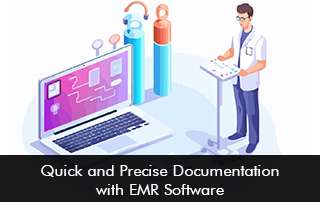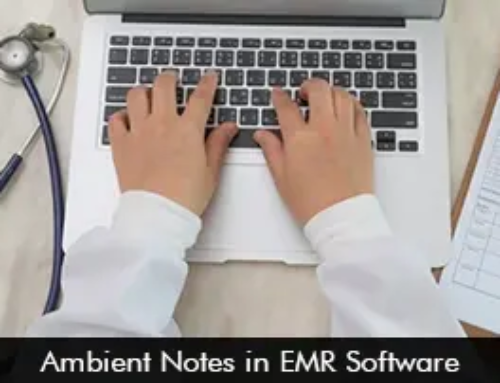EMR software is a central utility in achieving goals oriented on increasing the quality of clinical documentation, thus improving the quality of patient care, and decreasing the burden on healthcare workers. Electronic Medical Records (EMR) Software systems have replaced paper charts. Not only do they make it possible for medical records to be retrieved quickly, but all the information is recorded and safely stored.
Accurate Clinical Documentation with EHR Software
There are several aspects in which the EMR Software makes a difference when it comes to getting accurate documentation of the records among them are the template and auto-complete options. These templates help healthcare providers to enter fundamental data systematically; therefore, reducing the likelihood of mistakes. Using templates and input fields in electronic health records software guides specialists in entering all the necessary information. This thereby minimizes the chances of missing something or using an incorrect format.
Precise EMR Software Documentation Benefits for Patients and Providers
EHR Software plays a major role in documenting patient information which helps advance patient care. By being accurate, the various records yield detailed information that is handy for practitioners in charge of patient diagnosis and management. For example, all the information on a patient’s medication history, allergy, and past treatments is easily accessible, minimizing unwanted incidents such as medication dispensing errors. This leads to improved patients’ condition, as well as improving patients’ confidence in their caregivers.
Essential documentation is beneficial to healthcare providers in enhancing the optimum working of processes. Providers can spend less time sifting through the notes meaning they will spend more time with patients. Furthermore, documenting records creates a clear and easily understandable transfer of information from one healthcare practitioner to another as well as ensuring relative and overall care. For on-duty physicians from a legal standpoint, it also means that the EMR System is accurate and compliant and therefore provides clinicians with a legal means of documenting all interactions with the patient to avoid emerging controversies.
AI and Voice-to-text Technology Integration in EMR Software
AI Tools
Modern Electronic Health Records (EHR) Software enhances the documentation capability up to greater heights of advancement using AI facilities and voice recognition features. AI can interpret clinical information make suggestions on what it should do with patient care and identify conflicting situations that are possible when properly documented. It can also empower providers to quickly create other reports by capturing information from multiple parts of the patient’s record.
Voice-to-text Technology
Voice-to-text integration in EMR Software, enables providers to dictate the notes, compared to the time-consuming typing. This technology helps that documentation is done in real-time and patient encounters are captured effortlessly. These innovations do not only aspire to increase efficiency but also effectiveness in clinical documentation.
Combatting Burnout with EMR Software Documentation Tools
Robust and innovative clinical documentation solutions in EHR Software help to improve physician well-being and lower the chances of burnout. Studies have shown that 60% of providers experience burnout due to tedious documentation tasks. Fortunately, the use of EMR Software can alleviate burdens associated with documentation, by making it swift, accurate, and efficient.








